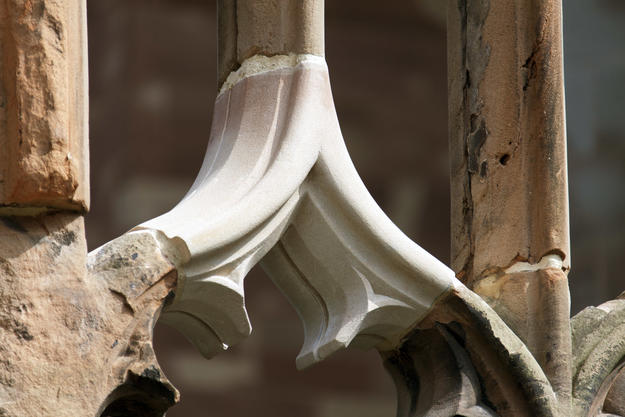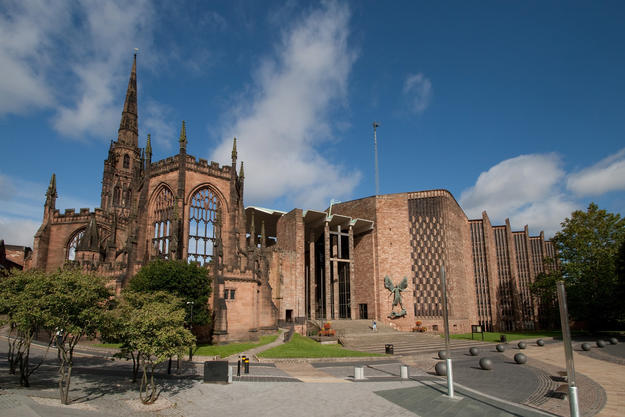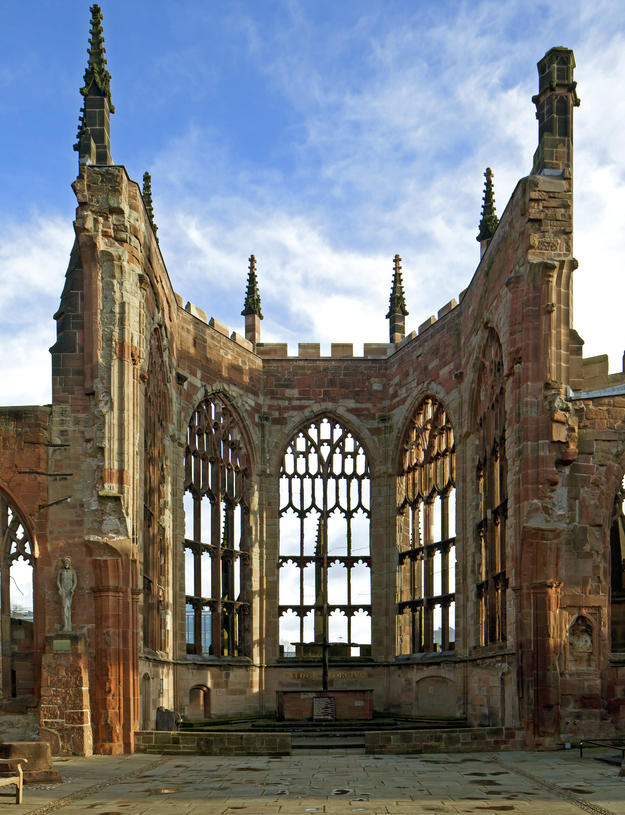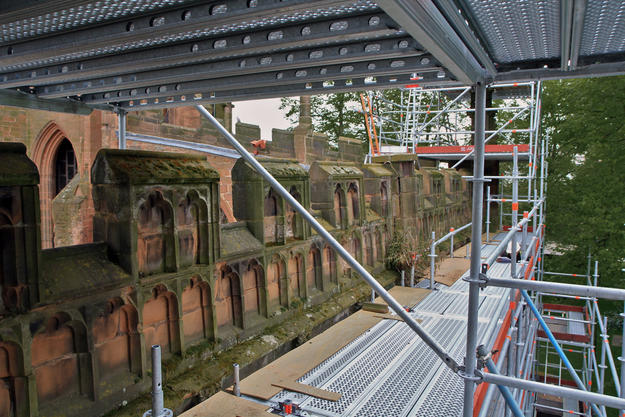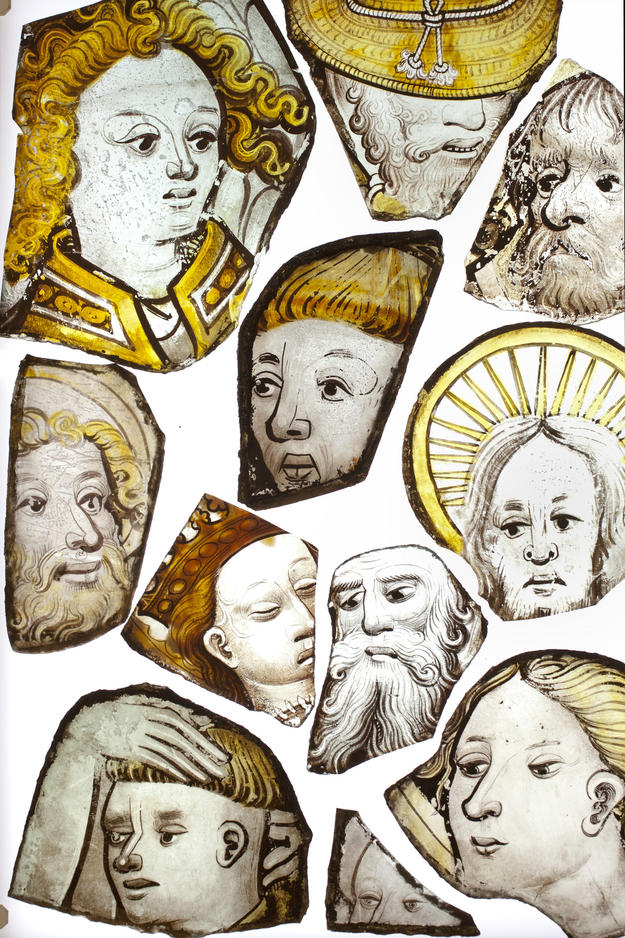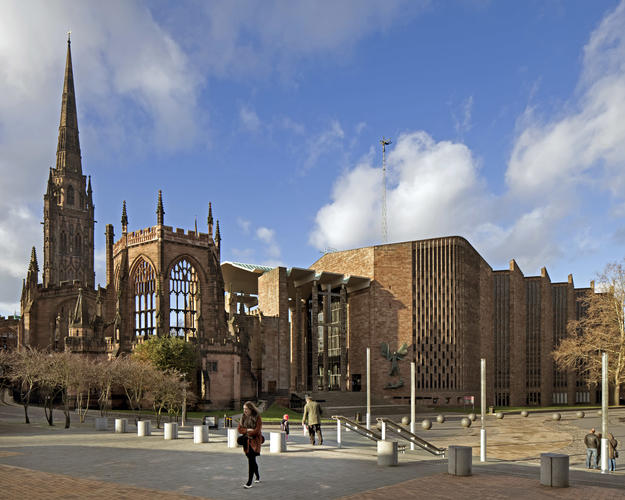Ruins of the Former Cathedral Church of St. Michael, Coventry
After Coventry Cathedral was gutted by incendiary bombs during World War II, a conscious and collective decision was taken to build a new cathedral and to preserve the ruins as a constant reminder of conflict, the need for reconciliation, and the enduring search for peace. First constructed as a chapel for the Earl of Chester’s castle in the twelfth century, the former Cathedral Church of St. Michael was significantly expanded during a time of prosperity in the late fourteenth century and eventually became the largest parish church in England. It was elevated to the status of cathedral in 1918. The vast Benedictine Priory of St. Mary also previously existed near the site, having been founded by Earl Leofric and Lady Godiva in 1043 and dissolved by Henry VIII in 1539 during the Dissolution of the Monasteries. Today, the excavated remains of the priory and the post-war cathedral coexist alongside the ruins of St. Michael, linking past to present. The ruins are still consecrated and used as a gathering place and site of reflection, and the weathered medieval sandstone of the tower, apse, and outer walls frame the open air space.
Conservation saves a monument of remembrance and the work of an important artist
Seventy years after the bombing, the ruins of the former Cathedral Church of St. Michael began to crack open. Water infiltration and structural deterioration problems developed at the site, which was included on the 2012 World Monuments Watch to call attention to its urgent need for conservation. With funding from American Express and the full cooperation of local citizens, Coventry City Council, the Dean and Chapter of Coventry Cathedral and other partners, we launched a project to safeguard and reinvigorate this evocative place. A conservation management plan was completed for the site in November 2012. It details objectives such as the enhancement of tourism through the establishment of commercial opportunities, which would help this poorly-funded cathedral to better provide sustainable resources for its own maintenance. Another goal outlined in the plan was the initiation of public programs to engage new audiences in the importance of the site’s conservation.
The cathedral’s windows were originally created by John Thornton of Coventry, one of the most important glaziers of medieval England. After they were shattered during the bombing, the fragments were collected and stored over the following years. In August 2012 they were removed from storage for documentation, cleaning, and conservation. The conservators set up a public workshop and held regular talks about the process. Watch Day took place in September 2012, and a visit to the workshop was part of the participants’ experience. They also enjoyed a historic tour of Coventry, a children’s stained glass course, and a treasure trail. The restoration of the fragments was completed in November 2012, and the glass was stored in an environmentally controlled area of the cathedral. The remains of the windows will eventually be displayed for the benefit of visitors.
Another phase of the project involved the conservation of the ruins themselves. Work began in June 2012 in the southwest corner of the site and included cleaning, replacements and repairs to the damaged mortar and stone. The stabilization of the north and east walls was carried out soon afterwards. After the removal of the concrete wall capping and its replacement with lead, the project was completed in March 2015. In May of the same year the Dean of Coventry Cathedral blessed the ruins, and a service and reception followed the ceremony. The excavation of the medieval crypts hidden beneath the ruins is currently underway with the objective of opening them to the public.


